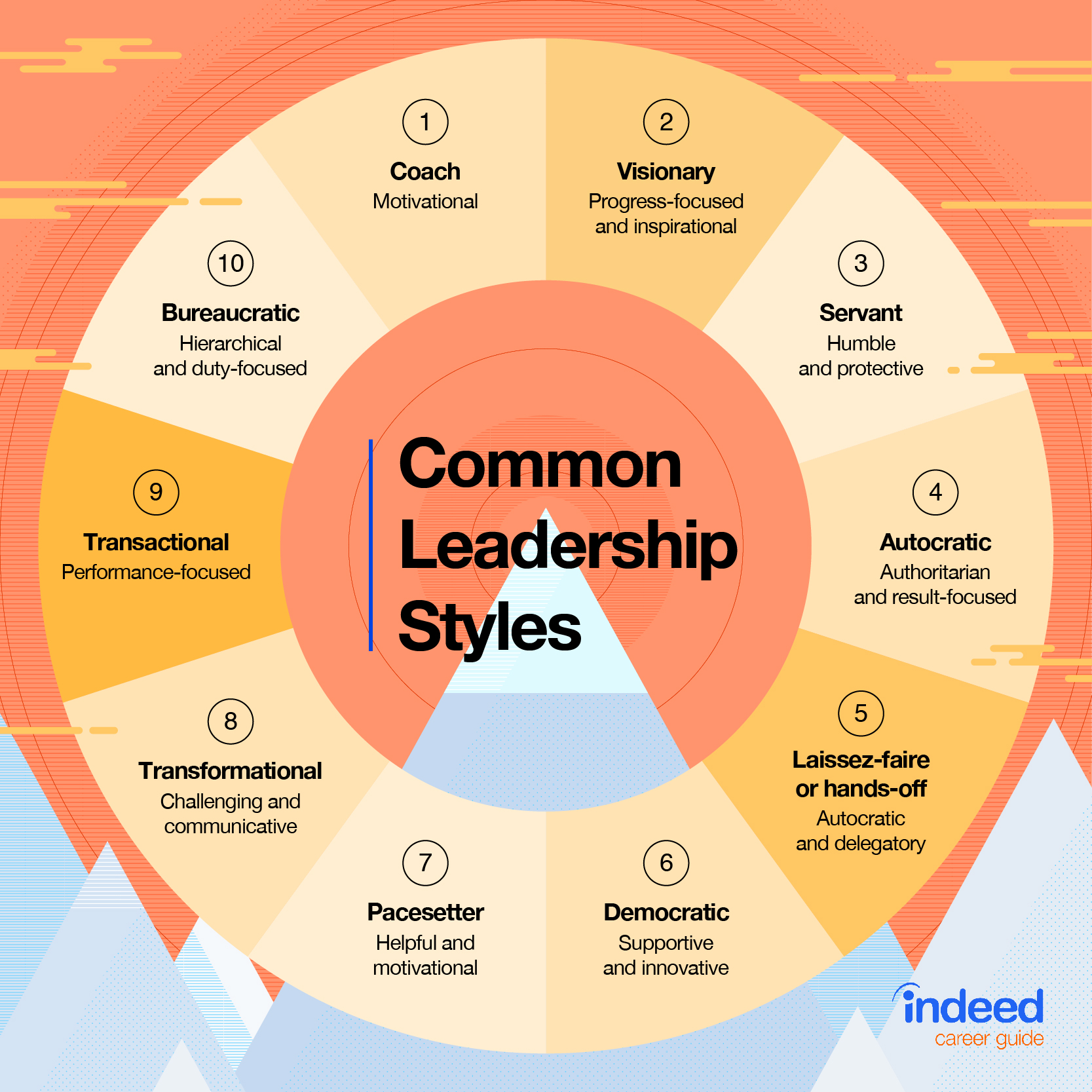Leading the Way: Case Studies in Effective Leadership dives deep into what makes a truly great leader. We’ll explore the characteristics, styles, and challenges faced by leaders across various situations, from navigating massive organizational change to fostering innovative teams. Think real-world examples, hypothetical scenarios, and plenty of actionable strategies you can use to level up your own leadership game.
This isn’t your grandpa’s leadership manual; we’re looking at practical applications and lessons learned from historical figures and modern-day successes. We’ll unpack the nitty-gritty of emotional intelligence, ethical decision-making, and building high-performing teams. Get ready to analyze case studies, brainstorm solutions, and ultimately, learn how to lead the way yourself.
Defining Effective Leadership: Leading The Way: Case Studies In Effective Leadership

Effective leadership is crucial for success in any organization, from small startups to multinational corporations. It’s not just about holding a title; it’s about inspiring and motivating people to achieve shared goals. This section explores the key characteristics of effective leaders, contrasting leadership styles, and highlighting the significance of emotional intelligence.
Five Key Characteristics of Effective Leaders
Effective leadership hinges on a combination of skills and traits. While individual strengths may vary, several core characteristics consistently emerge in successful leaders.
- Vision: Effective leaders possess a clear and compelling vision for the future. They can articulate this vision in a way that inspires and motivates others to work towards it. For example, Steve Jobs’ vision for Apple, focused on user-friendly technology and elegant design, propelled the company to global dominance.
- Communication: Leaders must be able to communicate effectively, both verbally and nonverbally. This includes active listening, clear articulation of expectations, and providing constructive feedback. Indra Nooyi, former CEO of PepsiCo, was known for her exceptional communication skills, fostering open dialogue and transparency within the organization.
- Integrity: Trust is the bedrock of effective leadership. Leaders with strong integrity act ethically and consistently demonstrate honesty and transparency in their actions. Nelson Mandela’s unwavering commitment to his principles, even during his imprisonment, solidified his image as a leader of integrity.
- Decisiveness: Effective leaders are able to make timely and informed decisions, even in the face of uncertainty. This requires careful analysis of information and the ability to weigh risks and rewards. Margaret Thatcher’s decisive leadership during the Falklands War demonstrated her ability to make tough choices under pressure.
- Empathy: Understanding and responding to the needs and emotions of others is crucial for building strong relationships and fostering a positive work environment. Leaders with high levels of empathy can connect with their teams on a personal level, boosting morale and productivity. Consider the leadership style of Jacinda Ardern, Prime Minister of New Zealand, known for her empathetic approach during times of crisis.
Transformational and Transactional Leadership Styles
Transformational and transactional leadership are two distinct approaches, each with its own strengths and weaknesses.
Transformational Leadership focuses on inspiring and motivating followers to achieve extraordinary outcomes. Transformational leaders create a shared vision, empower their teams, and foster a culture of innovation. Strengths include high employee morale and commitment, increased creativity, and significant organizational change. However, weaknesses can include a lack of focus on day-to-day operations and potential for burnout among team members due to high expectations.
Transactional Leadership is more focused on achieving specific goals through a system of rewards and punishments. Transactional leaders set clear expectations, monitor performance, and provide feedback. Strengths include clear structure, predictability, and efficient task completion. Weaknesses can include limited creativity and innovation, and a potential for decreased employee motivation if rewards are not perceived as fair or attainable.
The Importance of Emotional Intelligence in Effective Leadership
Emotional intelligence (EQ) is the ability to understand and manage one’s own emotions and the emotions of others. It plays a vital role in effective leadership, enabling leaders to build strong relationships, navigate conflict, and motivate their teams.
Consider a scenario where a team member is struggling with a project. A leader with high EQ would recognize the employee’s frustration, actively listen to their concerns, and offer support and guidance rather than simply criticizing their performance. This empathetic approach would foster trust and encourage the employee to continue striving for success. Conversely, a leader lacking in EQ might simply reprimand the employee, potentially damaging their morale and hindering their progress.
Another example: during a period of organizational change, a leader with high EQ can effectively communicate the reasons for the change, address employee anxieties, and foster a sense of collaboration and shared purpose. This approach reduces resistance to change and helps to ensure a smooth transition. Without EQ, the leader might fail to address employee concerns, leading to resentment and hindering the success of the change initiative.
Case Study 1: Leading Through Change
Leading through organizational change is a critical leadership skill. Successfully navigating these periods requires a blend of strategic planning, effective communication, and the ability to inspire and motivate teams during uncertain times. This case study will examine a historical example of successful change leadership, explore a hypothetical scenario, and offer strategies for building trust and morale.
Historical Example of Leading Through Change: Jack Welch at General Electric
Jack Welch’s tenure as CEO of General Electric (GE) from 1981 to 2001 is a prime example of successfully navigating significant organizational change. He transformed GE from a conglomerate of diverse businesses into a highly competitive, globally dominant company. His leadership during this period involved a series of strategic initiatives that dramatically reshaped the organization.
| Challenge | Leader’s Actions | Results | Lessons Learned |
|---|---|---|---|
| Declining profitability and inefficient operations across diverse business units. | Implemented “Six Sigma” for process improvement, streamlined operations, aggressively pursued acquisitions and divestitures to focus on core businesses, and fostered a culture of intense competition and accountability. | GE experienced significant growth in profitability and market share, becoming a global leader in several industries. Shareholder value increased dramatically. | Successful change requires a clear vision, decisive action, and a willingness to make tough decisions, including divesting underperforming assets. A culture of continuous improvement and accountability is crucial. |
| A hierarchical and bureaucratic organizational structure hindering innovation and agility. | Decentralized decision-making, empowered employees at all levels, and fostered a more collaborative and entrepreneurial culture. | Increased innovation, faster response to market changes, and improved employee engagement. | Empowering employees and fostering a culture of collaboration are essential for driving innovation and adapting to change. |
| Intense global competition and technological disruption. | Invested heavily in research and development, embraced new technologies, and aggressively pursued global expansion. | GE maintained its competitive edge and expanded its global reach, becoming a truly global player. | Proactive investment in R&D and a willingness to adapt to technological advancements are crucial for long-term success in a competitive global market. |
Hypothetical Scenario: Technological Disruption in the Retail Industry, Leading the Way: Case Studies in Effective Leadership
Imagine a major retail chain, “TrendyThreads,” facing a significant threat from a new e-commerce platform that uses advanced AI-powered personalized recommendations and same-day drone delivery. TrendyThreads’ existing infrastructure is outdated, and its customer loyalty is waning.A plan for the CEO to address this disruption would involve several key steps:
1. Acknowledge and Assess the Threat
Conduct a thorough analysis of the competitive landscape, identifying the strengths and weaknesses of both TrendyThreads and the competitor.
2. Develop a Strategic Response
This would include investing in new technologies (e.g., upgrading e-commerce capabilities, implementing AI-driven personalization, exploring drone delivery options), improving the customer experience (e.g., enhancing online and in-store shopping experiences), and potentially restructuring operations to be more agile and efficient.
3. Communicate the Plan
Transparency is key. The CEO should clearly communicate the challenges and the strategic response to employees, customers, and investors.
4. Implement and Adapt
The plan should be implemented in phases, with regular monitoring and adjustments based on performance data and market feedback. Agility and a willingness to adapt are crucial.
5. Foster a Culture of Innovation
Encourage experimentation and risk-taking within the organization to foster innovation and ensure long-term competitiveness.
Strategies for Building Trust and Maintaining Morale During Change
Building trust and maintaining morale during periods of significant change is critical for successful implementation. Three key strategies include:
1. Open and Honest Communication
Leaders should proactively communicate the reasons for change, the plan for implementation, and potential challenges. This transparency builds trust and reduces uncertainty. Regular updates and feedback mechanisms are crucial.
2. Employee Involvement and Empowerment
Involving employees in the change process, seeking their input, and empowering them to contribute to solutions fosters a sense of ownership and commitment. This can be achieved through task forces, surveys, or open forums.
3. Recognition and Appreciation
Acknowledging the efforts and contributions of employees during times of change is crucial for maintaining morale. Celebrating successes, both big and small, reinforces positive momentum and fosters a sense of shared accomplishment.
Ultimately, Leading the Way: Case Studies in Effective Leadership shows us that effective leadership isn’t about some magical formula. It’s about understanding the human element, adapting to change, and fostering a culture of trust and collaboration. By examining diverse case studies and exploring key leadership attributes, we’ve gained a powerful toolkit for navigating the complexities of leadership and inspiring others to achieve common goals.
So, go forth and lead!
Popular Questions
What types of leadership styles are discussed?
The study covers transformational and transactional leadership styles, highlighting their strengths and weaknesses.
How are ethical dilemmas addressed in the text?
The material explores ethical considerations through real-world and hypothetical case studies, emphasizing the importance of transparency and accountability.
Are there any specific tools or frameworks mentioned for improving leadership skills?
While no specific, named frameworks are presented, the text provides numerous practical strategies and approaches for building trust, fostering collaboration, managing change, and driving innovation.
Is this material suitable for beginners in leadership?
Yes, the accessible language and real-world examples make it valuable for those new to leadership, as well as experienced leaders looking to refine their skills.

